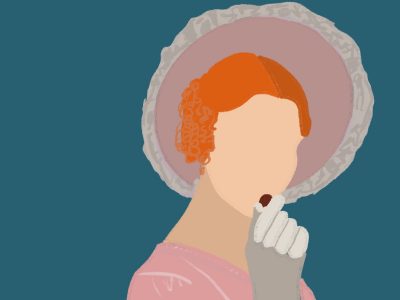Two months after its premiere, Netflix’s “Bridgerton” still ranks in the platform’s top ten. Its popularity has already ensured a second season that will start filming this spring.
The series takes place in the early 1800s during the Regency period in England, and is a classical period piece with a twist on the typical depictions of race during the time. The show focuses on the fictitious Bridgeton family, specifically the eldest daughter of the Bridgerton household, Daphne.
Simon, the duke of Hastings and another main character, is the most eligible bachelor of the season, and Daphne soon catches his eye. They proceed to fall in love in classic, overdramatic period-piece style.
All of this happens under the eye of a watchful Queen — who uses snuff, a tobacco-based substance — as well as an anonymous narrator dubbed “Lady Whistledown.” And the Queen’s snuff use proves a connection to the New World of North and South America.
This is what I want to focus on here: the connection between South America and the Caribbean and the wealth flaunted in this show.
First, the snuff the Queen is addicted to would likely have come from Caribbean or North American plantations. Snuff is ground-up tobacco — fine enough for a person to snort — and was very popular in the 1800s.

Much of the wealth in this period came from exploitation and the products of slavery. With the Columbian Exchange, European families that the Bridgertons are based on were able to profit immensely off of slavery in the Carribean.
For example, let’s look at the Great Valley Sugar Estate located in Jamaica and run by English patrons. Robert Hibbert, a wealthy man born in England, owned the plantation and reaped its benefits. He built a house in Cheshire, England, which he called Birtles Hall, and funded the entire demolition and construction process with immorally gained profits.
This is one of the problems with period pieces such as “Bridgeton.” They glorify the lives of incredibly wealthy, well-off people, yet gloss over how they were able to afford the luxuries in the first place. Often, their wealth came from the exploitation of British colonies.
The highest form of sophistication was born from the exploitation of labor. Period pieces such as “Bridgerton” are a new generation of high society romanticization and the land and wealth that comes from it. This is quite similar to the idealization of antebellum southern plantation life.
A prime example of this is showcased in “Gone with the Wind.” The film and book created a misconception that allowed people to view plantation culture as refined, beautiful and something to aspire to. The film is incredibly racist and similar in thematic elements to the period pieces of today.
It seems as if the new trend in historical films and TV is to show off expensive clothing and massive houses. Yet they never take the opportunity to educate the audience on where the wealth came from. This is the case in “Bridgerton” as it is in many period dramas: Wealth exists, but no context is given to how it is obtained.
These period pieces should be taken with a grain of salt. While the clothes and houses may look pretty, unethically using and enslaving people certainly is not.
The point of this discussion is not to stop watching period pieces — I have watched my fair share of them — but rather to think critically about where the wealth comes from and not idealize wealth built upon slavery. Even today, many of our lives and ancestries are intertwined with slavery, and we must learn the history to understand modern discussions of wealth gaps and reparations.




